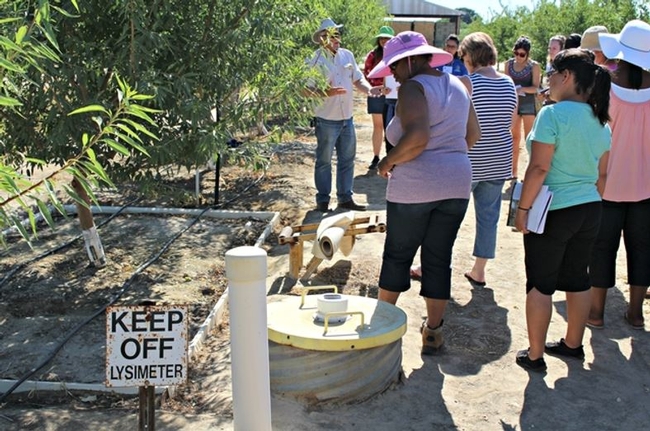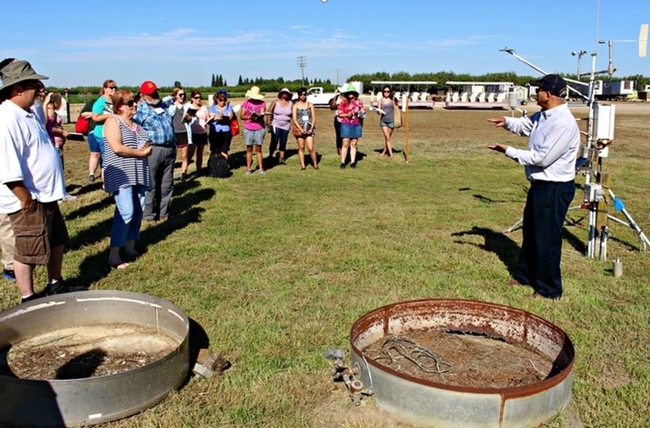Third grade teachers from around California toured UC ANR Kearney Agricultural Research and Extension Center (KARE) Center July 21 during a week of Next Generation Science Standards training in nearby Reedley sponsored by the K-12 Academy and WestEd.
Led by Chuck Boldwyn, KARE superintendent of agriculture, tour stops highlighted the California Irrigation Management Information System (CIMIS) weather station, sorghum deficit irrigation trials, and how a soil weighing lysimeter measures tree and vine crops water use.
Boldwyn encouraged teachers to subscribe to California Agriculture journal. Readers in the United States can subscribe for free. Published by the UC Division of Agriculture and Natural Resources (ANR), the quarterly peer-reviewed journal reports on research, reviews and news of California's agricultural, natural and human resources. Content can be easily understood by non-specialist readers. International subscription rates are $24 a year, or $20 a year for two years or more.
Khaled Bali, UC Cooperative Extension specialist in statewide irrigation water management at KARE, explained at the weather station how the data is used for irrigation management decisions. CIMIS was developed in 1982 by the California Department of Water Resources and UC Davis. One of the first CIMIS weather stations to be put into use is still located at the UC ANR West Side Research and Extension Center in Five Points.
At a stop in a peach orchard, teachers were surprised to learn of the large weighing lysimeter just below their feet. Basically, a lysimeter is a large "flower pot" measuring 6.5 feet wide by 13 feet long by 6.5 feet deep that rests on a sensitive balance-beam weighing scale in an underground chamber. Why would you want to measure soil weight? Short-term soil weight loss is almost entirely due to water evaporation through leaves or from the soil surface. When a specific threshold is exceeded, the crop is automatically irrigated. The orchard lysimeter has also been used to study the effects of water stress on tree water use. Two lysimeters were constructed at KARE in 1986. The second lysimeter is located in a vineyard.
Comments from teachers recognized the value of the agricultural science research underway at KARE.
"I was not aware of all the research that is going on in ag."
"A great tour. I hope the Reedley teachers take advantage of having the Kearney Center so close to them."
"It was amazing to see the concepts we have been learning put to work."

